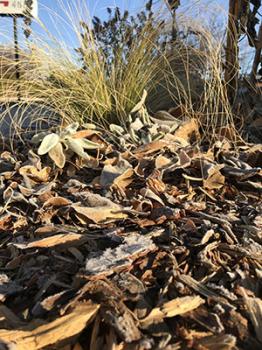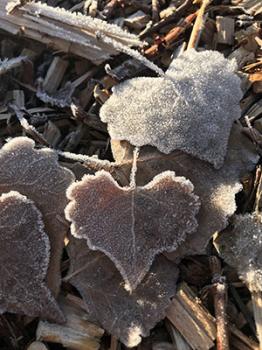February 1, 2020
Soil Searching: Amendments Are No Longer Recommended
Partial reprint from October 2018
Question:
Should I add fertilizer or amendments to the soil when planting landscape plants in my garden?
- Gardeners All Over New Mexico
Answer:
The short answer is no. And the long-term answer is an even stronger no. Soil amendments are materials that are worked into the soil with the intention of improving soil physical qualities. The trouble is it’s just not that simple. As City of Las Cruces Community Forester Jimmy Zabriskie said when I asked if he ever recommends using soil amendments when planting a tree, “Save your money for mulch.” Mulch is material that sits on top of the soil, providing an insulation layer that helps control soil temperature, retain moisture, and suppress weeds.

This is assuming you’re planting ornamental plants that are recommended for your area. The recommended species are the ones with roots that are well adapted to our native soils, so they’re more likely to live long, sustainable lives. The bottom line: Always put the same soil you dug up right back into the hole with the new plant, and top dress with a thick layer of mulch.
Slow and steady wins the race when it comes to perennial landscape plants. As Albuquerque City Forester Joran Viers said last week at a tree planting demo put on by Tree New Mexico and The Nature Conservancy, it helps to think of our trees (and other perennials) as marathoners, not sprinters. When fertilizer is applied to trees, they can grow too fast for their own good and are more likely to develop structural problems and have other issues. Fertilizers are not recommended at the time of planting perennial plants because we want the plant’s energy to go into root establishment at a healthy rate to support the aboveground growth. The growth hormones necessary for healthy root development are found in the root tips and are made by the plant itself, so adding root stimulator to living roots is not necessary, or even helpful. (Side note: Rooting hormone is potentially useful when you’re trying to get roots to grow quickly from cuttings where the roots have been removed completely.) Hold off on fertilizing for at least a few years while your plants are setting down roots.

Research on all sorts of landscape plants has shown that by adding amendments (like organic matter or perlite) to your soil backfill, the initial, short-term results are good. But the interface between the amended soil and the native soil is bad news. Water doesn’t move well across the interface, and neither do roots. With time, the roots may be inclined to stay in the original planting hole and spiral around, so you end up with essentially a potted tree with reduced growth rate, constant water and nutrient stress (because lateral roots never fully developed), heightened vulnerability to pests and diseases, and even an increased falling hazard (think root ball in socket).
Even after landscape plants are established, the best practice is “test, don’t guess.” Having your soil tested can help you decide which nutrients are deficient, if any. The International Society of Arboriculture’s new Best Management Practices publication for tree planting warns that even if soil tests “reveal conditions that will limit tree performance, amending the fill soil is rarely effective at correcting the long-term problem.” That’s the key—we’re talking long-term plant health here. NMSU Extension Guide A-114: Test Your Garden Soil, has great info on soil testing. I’ll include links to other soil and planting resources on the blog version of this column at Desert Blooms.
Marisa Y. Thompson, PhD, is the Extension Horticulture Specialist, in the Department of Extension Plant Sciences at the New Mexico State University Los Lunas Agricultural Science Center, email: desertblooms@nmsu.edu, office: 505-865-7340, ext. 113.
Links:
For more gardening information, visit the NMSU Extension Horticulture page at Desert Blooms and the NMSU Horticulture Publications page.
Send gardening questions to Southwest Yard and Garden - Attn: Dr. Marisa Thompson at desertblooms@nmsu.edu, or at the Desert Blooms Facebook page.
Please copy your County Extension Agent and indicate your county of residence when you submit your question!